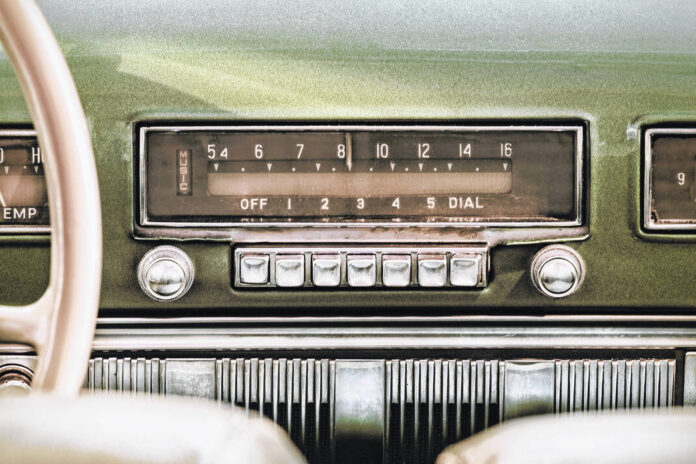Sean Hannity is rarely on the same frequency as liberal Democratic lawmakers. Nor does he usually support legislation that makes demands on the private sector.
But the conservative Fox News star and radio host is cheering on the efforts of Sen. Edward Markey, D-Massachusetts, to require car manufacturers to keep the AM dial in their vehicles.
Hannity’s daily program reaches more than 13 million terrestrial radio listeners a week, mostly on AM stations, which face obsolescence as major car manufacturers such as Volkswagen, Volvo and Tesla remove the band from their electric vehicles.
“What they’re trying to do would impact political opinion to a very big extent,” Hannity said in a recent phone interview. “Thankfully, there are even Democrats who see the importance of this.”
It’s not just conservative hosts who would feel the sting of losing AM, a communications source for more than 100 years. While AM stations have seen their audience migrate to podcasts, satellite radio and streaming, they still provide a free-to-listen voice for underrepresented communities and remain a reliable source of public safety information in emergencies.
Markey has responded to the threat with the AM Radio for Every Vehicle Act, which would require all cars sold in the U.S. to provide the band in their dashboards. The bill — co-sponsored by Sen. Ted Cruz, R-Texas, and supported by lawmakers on both sides of the aisle — will go to the Senate floor in some form for a full vote later this year. The bill last week passed the Senate Commerce Committee.
The legislation would place a burden on automakers. Car manufacturers say motors in electric vehicles generate electromagnetic interference that causes static in AM station signals. Instead of investing in workarounds that would solve the interference problem, they have chosen to eliminate the band, noting the other audio options that are available to consumers.
Scott A. Schmidt, vice president of the Alliance for Automotive Innovation, a lobbying group for the auto industry, told Washington legislators at a June hearing that there are safety alert systems included in digital audio services that can serve drivers who don’t have AM radio.
As for the proposed requirement to keep AM in cars, Schmidt said “mandates are a blunt instrument” especially for a technology that “has declining listenership.”
Markey supports the move to electric vehicles as a way to address the climate crisis and reduce greenhouse gas emissions, but doesn’t believe AM should be sacrificed as a result. The National Association of Broadcasters, the lobbying group that represents TV and radio station owners, threw its support behind the bill.
Michael Harrison, a consultant and editor of the radio industry journal Talkers, said technological obsolescence is a fact of life in media. But he believes it’s a miscalculation to give up on AM radio in cars when one in three Americans tune in to the band every month, according to Nielsen data. Plus, it still functions as a platform for free speech and information vital to the public.
Three-quarters of AM listening occurs in cars, so losing its place on the dashboard would ultimately chip away at the available audience and disrupt listener habits. Losing more audience would intensify the financial pressure on AM station owners, some of whom have shut their outlets down in recent years.
“The car makers got rid of 8-track tape players, they got rid of cassette players, they got rid of CD players and rightfully so,” Harrison said. “They didn’t realize that the AM radio has far more cultural roots and underpinnings and far more meaning and applicability than those other dashboard devices.”
AM stands for amplitude modulation, used to transmit information in a radio wave. The very first commercial radio broadcast — a report on the results of the 1920 presidential election won by Warren Harding — was transmitted over Pittsburgh’s AM station KDKA.
The most powerful AM signals can be heard over several states. They dominated broadcasting for more than 50 years, bringing listeners Bing Crosby’s crooning, Bob Hope’s comedy routines and Franklin Delano Roosevelt’s fireside chats in the 1930s and ’40s.
During the Cold War era of the 1950s, AM frequencies were designated to provide civil defense information in the event of a nuclear attack. In the 1960s, top 40 stations such as KHJ-AM (930) — “Boss Radio” in Los Angeles — gave baby boomers the sound of the Beatles and Motown.
“If they’re being obstinate about this, I’m just gonna name the names and let people know that they’re silencing conservative voices here,” Hannity said. “I don’t think they’ve put a lot of thought into it.”







